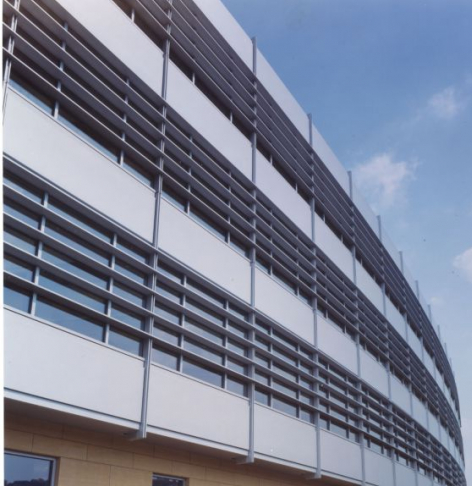- Metalwërks
Metal Cladding: The Better Firewall
Metal Cladding: The Better Firewall
Solid Metal Wall Panels Remain the Preferred Choice for Fire Resistance

Consider the factors that architects and specifiers must weigh when it’s time to source and select cladding for a building’s exterior.
Because it is the building envelope, exterior cladding – the barrier wall – must first address the question of durability. It must be resistant to moisture, wind and Mother Nature’s other forces.
Next comes the question of energy efficiency, which is always a driving force in the design and construction of any building. The exterior wall must be properly insulated so that the building can maintain optimal temperatures and meet building code requirements. Additionally, the exterior cladding must properly protect the air vapor barrier and thermal layers.
Aesthetics also play a part in the decision-making process, because those exterior wall panels serve as the building’s signature. What kind of visual appeal does the cladding deliver? Will it turn heads?
Then comes the critical issue of overall safety.
What if a fire were to break out inside the building? What if a vehicle near the building catches fire? How will the cladding react? Does it have flammable properties that could cause flames to spread, endangering the structure and the people inside?
Events over the past several years have made this final consideration an increasingly important one.

Choices and More Choices
Thanks to innovation, architects and designers have a growing number of options when it comes to exterior cladding for a building.
Among them are metal composite material (MCM) panels. According to the Metal Construction Association, MCM panels are “…formed by joining two thin metal skins to a polyethylene or fire-retardant core and then bonded under a precise temperature, pressure and tension.” In these situations, the metal of choice is often aluminum.
Because of their make-up, MCM panels can offer greater flexibility and versatility when compared to solid metal panels of equal or similar thickness.
An exterior insulation and finish system (EIFS) is a different kind of composite exterior cladding system designed to deliver protection from the elements, a layer of insulation and a finished surface, all in one integrated solution. EIFS typically consists of an insulation board that is attached to the substrate, a reinforced base coat and a textured protective finish coat.
Beyond delivering energy efficiency that outpaces other exterior cladding solutions, EIFS also provides designers and architects with design flexibility in the planning process.
The Trade-Off
Despite what they offer, MCM panels and EIFS have a key component in common that can be seen as a drawback.
It’s about what’s inside them, in their core – plastic, foam or another kind of synthetic material.
That means both MCM panels and EIFS can ignite more readily than other materials and even contribute to spreading a fire once it breaks out.
Consider the example of the Grenfell Tower fire in London in 2017, the deadliest fire in that city in more than 30 years at the time. More than 70 died in the high-rise apartment building fire, and another 70 were hurt.
Inquiries conducted after the devastating fire showed that the ACM on the high-rise tower utilized polyethylene polymer filler, which likely contributed to the spread of the flames. A year later, the government of the UK banned the use of combustible materials in the external walls of residential buildings over a certain height.
Across the globe over the past 15 years, nearly ten other high rises with exterior walls that contained flammable materials suffered similar fires.

A Better Firewall: Solid Metal Cladding
The term firewall typically applies to the kind of “virtual” wall constructed to protect a website from hacking, intrusion and viruses.
In the world of building and construction, solid metal cladding is the better firewall.
Solid metal panels made of aluminum have a melting point of more than 1,200 degrees Fahrenheit. That number is even higher with stainless steel panels. Such panels contain no plastics, foam or other synthetic material. In essence, they are non-combustible.
In the end, they are an optimal choice for external cladding when it comes to safety.